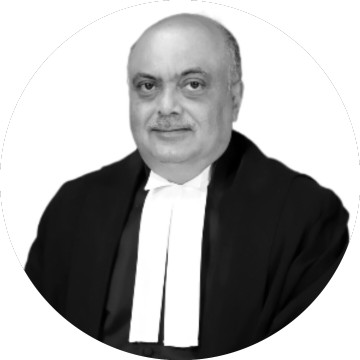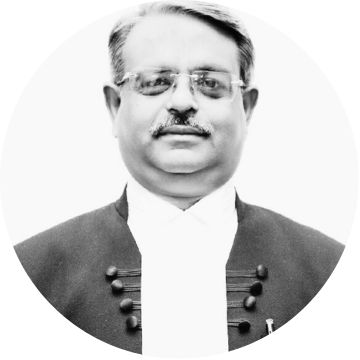Supreme Court: In two appeals involving the issue whether the Air Force School, Bamrauli, in District Allahabad, is a ‘state or authority’ within the meaning of Article 12 of the Constitution of India, the three Judge Bench of Abhay S. Oka*, Ahsanuddin Amanullah**, and Augustine George Masih, JJ. in 2:1 majority held that the Air Force School is not a “State” or “authority” under Article 12 of the Constitution, and consequently, writ petitions filed by its employees are not maintainable under Article 226 of the Constitution. Justice Ahsanuddin Amanullah gave the dissenting opinion, disagreeing with the majority’s view.
Background
Air Force Schools were established in the year 1966 for imparting education to the children of the personnel of the Indian Air Force (‘IAF’). Indian Air Force Educational and Cultural Society (‘the Society’) was registered under the Societies Registration Act, 1860. It was registered on 10-11-1987. It was established to manage Air Force Schools. The Air Force Schools at Bamrauli applied for affiliation with the Central Board of Secondary Education (‘CBSE’) in 1985.
Appellant 1 was appointed as a trained graduate teacher in physical education at a school by the IAF on 1-07-2005, following a public advertisement and selection process. Initially appointed on probation, his probation was extended multiple times. On 28-06-2007, the appellant was informed that he was rendered surplus due to the school’s decision to hire a more qualified teacher. He was given the option to either work on a contractual basis or have his service end on 3-07-2007. The appellant filed a writ petition before the High Court, seeking a declaration that he was a confirmed teacher. The Single Judge ruled in his favor, declaring the school as a ‘State’ under Article 12 and setting aside the termination order, directing the school to reconsider his confirmation. However, the Division Bench overturned this decision, ruling that the school was not a ‘State’ under Article 12, thus making the writ petition untenable.
Appellant 2 was a post-graduate teacher (Commerce) at the same school, was appointed as the officiating Principal in 2003. In 2005, disciplinary proceedings were initiated against him by the newly appointed principal. Following various allegations, a charge sheet was issued against him. The appellant challenged the appointment of the newly appointed principal and the charge sheet by filing two writ petitions, which were dismissed by the Single Judge in 2006. Subsequently, he was terminated from his position. An appeal was made to the Division Bench, but the court dismissed the appeal in November 2010, ruling the writ petition non-maintainable.
By the impugned judgments, the Division Bench of the Allahabad High Court held that the Society is not a ‘state’ within the meaning of Article 12 of the Constitution.
Analysis and Decision
Majority Opinion
The Court noted that in the counter filed before the High Court, the respondents contended that the Society is a non-profit welfare association, and the school is a non-public fund school. It was stated that the finances are arranged through fees collected from students under various heads, along with contributions from air force personnel through their welfare fund. The respondents specifically pleaded that no Central Government funds are involved in the school’s finances, and there is no control or management by the Central Government or the Ministry of Defence.
The Court also took note of the respondents’ assertion that the Education Code issued by the Society is not identical to that of the CBSE or Kendriya Vidyalaya. Moreover, the respondents reiterated that the school does not receive any grants from agencies connected to the government.
After reviewing the application made to CBSE for affiliation, the Court found that the school was listed under the name of the Air Force Primary School. While it was stated that the school was fully financed by the IAF, no evidence was presented to substantiate this claim. The Court observed that the Education Code, which governs Air Force Schools, is not a statutory code with the force of law but is issued under the authority of the Chairman of the Board of Governors of the IAF Educational and Cultural Society.
The Court further noted that, as per the Memorandum of Association of the Society, the members are IAF officers ex-officio, and the Command Schools Managing Committees do not control the day-to-day operations of the schools. Instead, the School Managing Committee has control over the daily functioning. Despite the school building being constructed with public funds, there was no record showing that the school receives grants from public funds. Additionally, the Court found no evidence in the Education Code to suggest that the IAF had control over the school.
The Court reviewed the audited accounts of the school from 2019-2020 to 2023-2024, which showed that no public funds or grants were received. While the pay scales for IAF schools are determined by the IAF, this alone does not indicate pervasive control over the school. Finally, the Court highlighted that, although some funds may have originated from the Army Welfare Society, there was no proof that the State or the IAF exercised control over the school, and the Society itself is not governed by any statutory rules.
The Court highlighted that in the impugned judgment, the Division Bench acknowledged the undisputed fact that the appellants are employees of the school, which is not governed by any statutory regulations. It also noted that the Education Code, which applies to the school, lacks statutory sanction or legal force. The Division Bench recorded a finding of fact that there was no evidence to show that the Government or the IAF exercised any control over the management of the school. Given these observations, the Court found it impossible to take a contrary view.
Unable to find any fault with the view taken by the Division Bench of the High Court, the Court concluded that the relationship between the appellants and the school was deemed to be that of a private contract. Even assuming a breach of this private contract, the court stated that it did not involve any public law element.
Consequently, the Court found no merit in the appeals and dismissed them.
Dissenting opinion by Justice Ahsanuddin Amanullah
He highlighted that the school was established by the IAF as a welfare measure for the education of IAF personnel’s children. The policy decision to set up the school was made at the highest levels of the IAF, which also took on the responsibility of creating the infrastructure and providing both administrative and financial mechanisms to run the school. Each school was to have a School Managing Committee, which included IAF officers posted locally. In terms of funding, besides student fees, the school also received financial support from various IAF welfare funds, which are contributory funds from IAF officers and personnel. The school building itself was constructed on IAF land with funds from the IAF.
Justice Amanullah further noted that while the school provides education to both IAF personnel’s children and some non-IAF children, the act of imparting education is considered a public function, impacting the public at large. The school’s administration, under the Committee made up of IAF personnel, indicates that the IAF retains ultimate control over the management of the school. This includes control over the recruitment, discipline, and termination of teachers and staff. The Court concluded that the IAF exercises full and all-pervasive control over the school, including disciplinary authority and the power to terminate employment.
He further highlighted that all orders related to appointments, extensions of probation, and pay fixation are issued under the authority of IAF officers, and noted that the IAF’s control over the school is not merely regulatory but deep and pervasive, as it extends beyond supervision to include involvement in the day-to-day workings of the school. This was also reflected in a Notification by the Press Information Bureau (Defence Wing) dated 02-03-2009, which announced the appointment of the first Director General (Administration) with responsibilities that included overseeing Air Force Schools.
Justice Amanullah pointed out that multiple levels of IAF authority supervise, administer, and control the functioning of the school, which performs a public function, i.e., the imparting of education. Furthermore, as stated in the application for affiliation with CBSE, the school was explicitly described as “fully financed by the Air Force,” reinforcing the extent of IAF control over the institution.
He held that the School/Committee was amenable to writ jurisdiction under Article 226 of the Constitution. It noted that IAF officers were involved in the recruitment process of teachers, including interviews for the position of Principal, which demonstrated the pervasive control of the IAF over the school’s operations.
Justice Amanullah further highlighted that the term “Non-Public Funds” was misleading, as these funds, while not labeled as “Public Funds”, were essentially public in nature. They included direct contributions from Air Force Units and were supplemented by Regimental Funds. These funds were used for welfare measures for IAF personnel, such as canteens, and were exempt from income tax, meaning the government forwent its share of taxes on such funds. Even if the funding was not direct, he noted the indirect support from the Government of India and the Ministry of Defence, which had provided land and granted tax exemptions.
Regarding the non-statutory nature of the Education Code for Air Force Schools, he stated that this alone could not determine the issue at hand. He emphasised that the Chairman of the Board of Governors of the IAF Society was a senior-ranking Air Marshal, and all Air Force Schools were registered under the Society, whose members were IAF officers. The land on which the school had been built and the funds used for its construction were from the IAF, further establishing financial support from the IAF. The corpus and assets of the IAF were ultimately traceable to the Central Government.
Given these facts, Justice Amanullah concluded that the Committee/School fell within the ambit of ‘authority’ under Article 226 and was also covered under ‘other authorities’ within the meaning of Article 12 of the Constitution.
CASE DETAILS
|
Citation: Appellants : Respondents : |
Advocates who appeared in this case For Appellant(s): For Respondent(s): |
CORAM :







